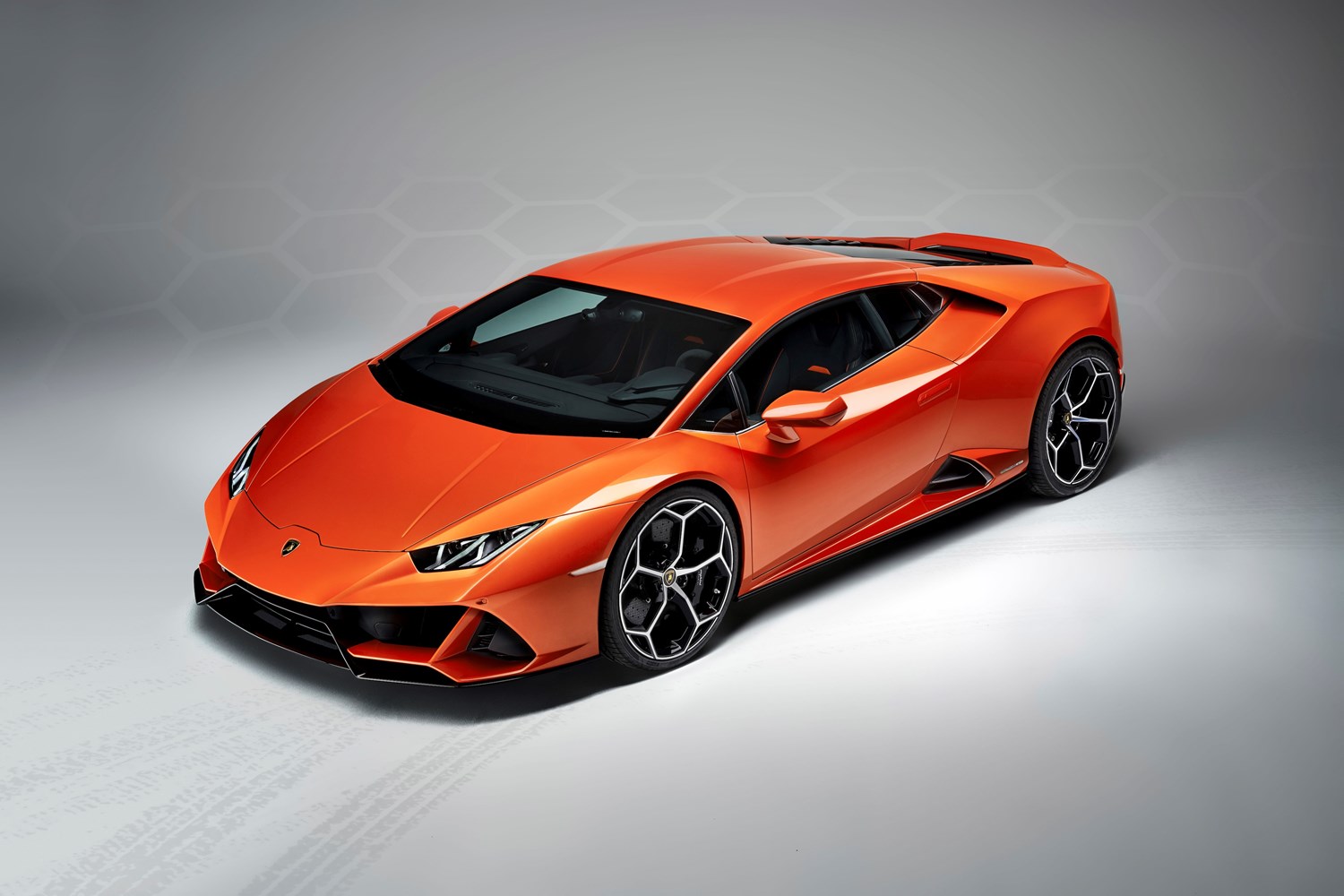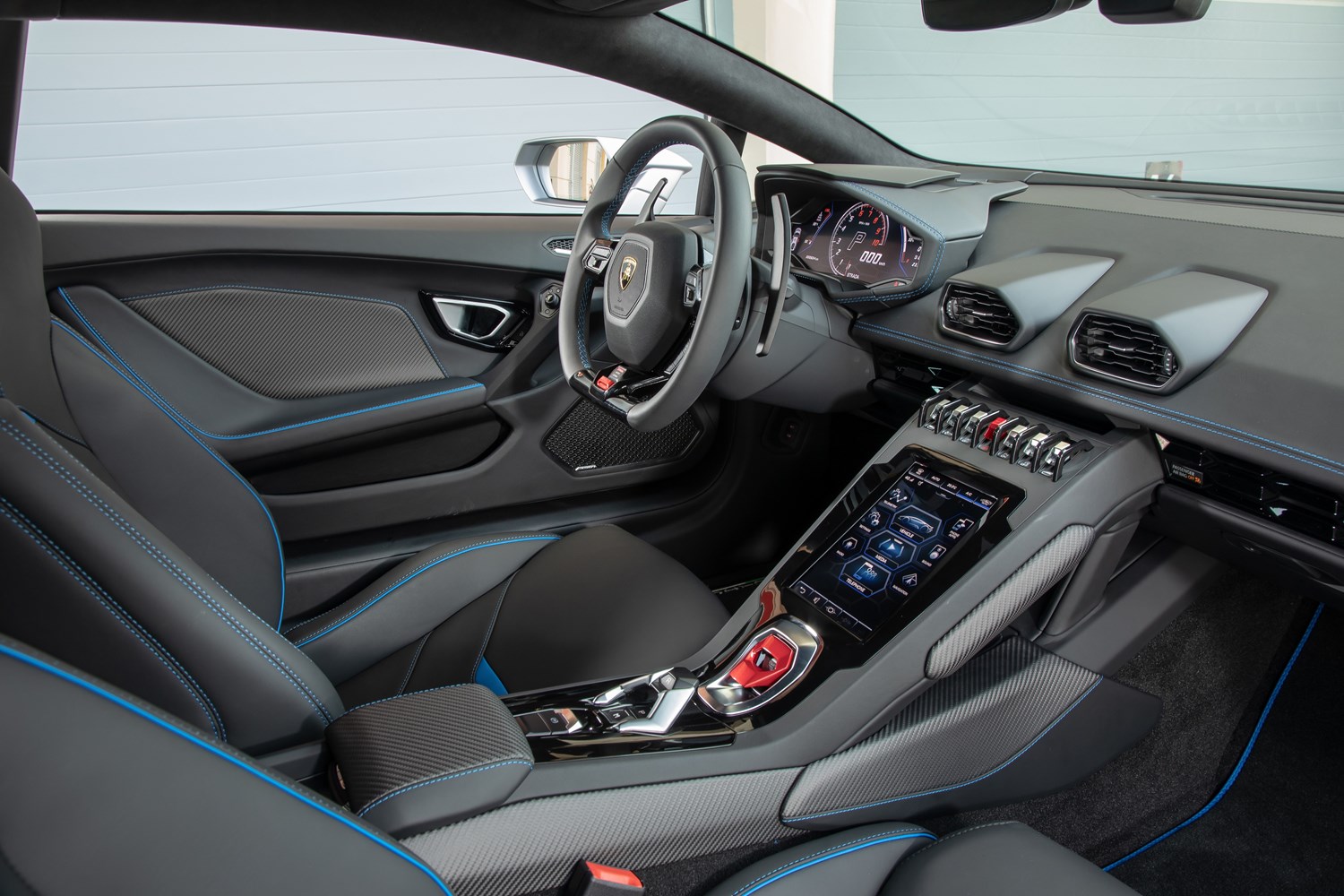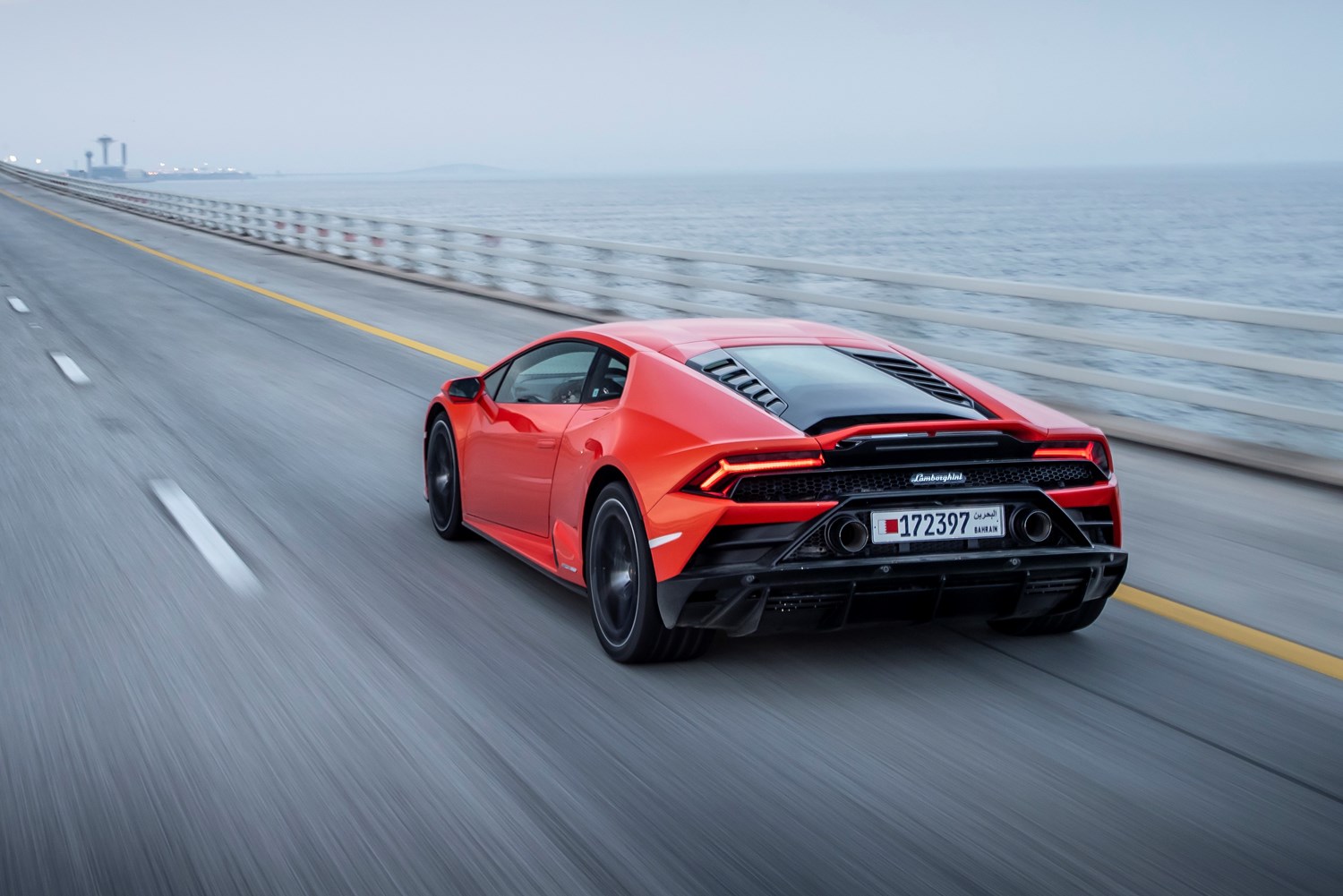Latest model
Come 2019 it was time for the Huracan to have a facelift, with Lamborghini renaming it as the ‘Evo’. It actually features the same more powerful engine as the previous Performante model, and can be spotted by its redesigned front end with new integrated air inlets and a revised rear – both of which help to give it a more extreme look. A rear-wheel-drive version would also follow in 2020, simply known as the ‘Evo RWD’.
The latest incarnation of the Huracan came in 2021 with the STO – essentially a track-focused road model based on the brand’s Super Trofeo Evo race car. Though power remains the same as the regular Huracan, the STO is 43kg lighter than the standard car, thanks to the removal of all-wheel-drive and wider use of carbon fibre to really give the model both the look of a race car but also the drive of one.
Value for money
A Huracan is unlikely to be bought for its value for money, and it’s safe to say this is no bargain. Prices here start at £137,000 for the RWD, £165,256 for the standard coupe and £181,781 for the Spyder. These figures are excluding UK tax, so you can add another significant chunk to the price once these have been paid. However, you do have to consider the performance and sheer presence of the Huracan when looking at these figures. On the flip side, it’s also considerably cheaper than the brand’s Aventador.
At the time of writing, the cheapest used Huracan (including taxes paid), started at around £120,000, which buys a well-specced 2014 car with around 20,000 miles on the clock. You’ll have to spend another £30,000 on top of that to buy a Spyder, though it was another few years before they were introduced. For newer Evo models, you’ll have to spend close to £200,000 to get one.
Looks and image
Few cars can turn heads quite like Lamborghinis, and the Huracan is certainly no exception. With truly wild styling from its angular front end, it has street presence like few other cars can manage. Even in more sedate colours it’s much the same, though if you want something truly bold choose a colour like purple, orange or yellow for your Huracan.
It’s similarly wild on the Huracan’s interior, with Lamborghini having free reign to make the cabin as unique as it likes. Highlights include a starter button revealed under a fighter jet-like switch, while similarly to a Ferrari, a range of buttons are found on the steering wheel, including both the wipers and indicators. There’s also plenty of leather, Alcantara and carbon used throughout the interior, while digital dials and an 8.4-inch touchscreen help to give it a more modern feel.
Undoubtedly the star of the show in the Huracan is its engine. Though we’ll explore it in detail later, it’s incredibly characterful, while a titanium exhaust system really helps to amplify the Huracan’s beastly powerplant. The latest ‘Evo’ model turned up the thrills, adding features like rear-wheel steering (only available in four-wheel-drive cars) to really add to the sense of agility. Though perhaps not as dynamic as the class best, few supercars can get close to it when it comes to outright thrills.




